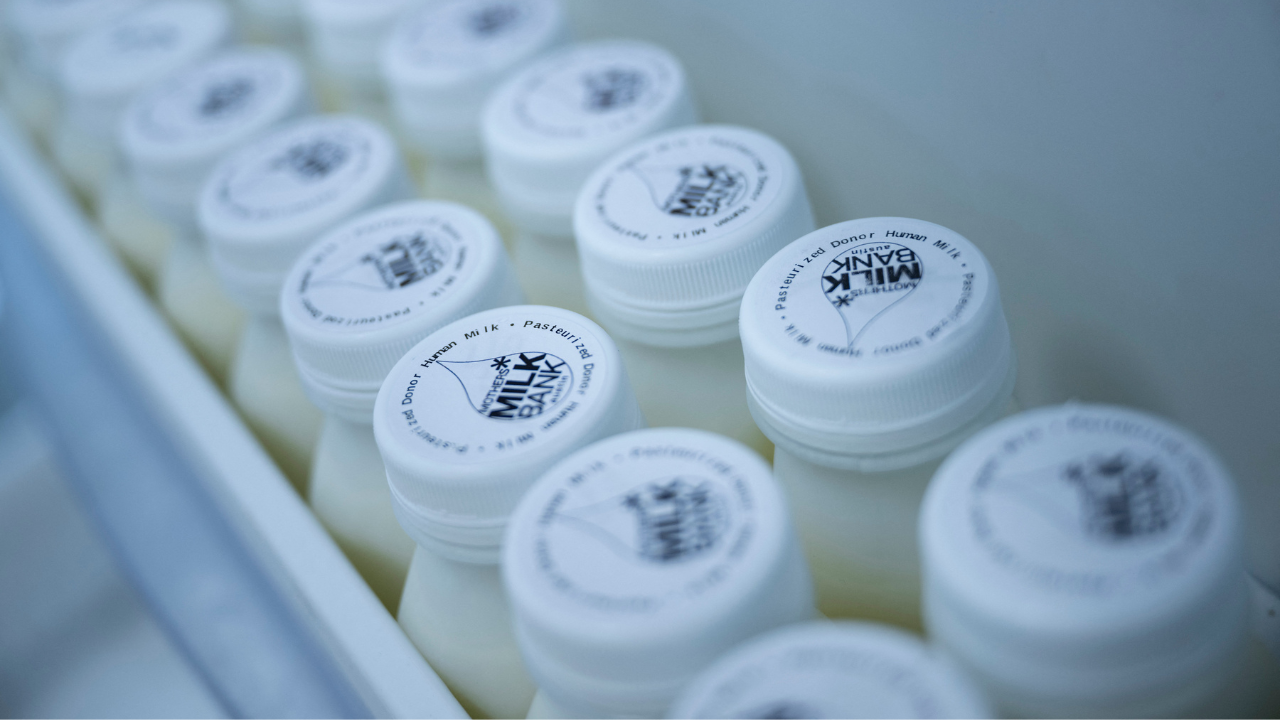Driverless cars keep running into roadblocks — and bicyclists — so automakers are doubling down on partially automated systems, betting that customers will appreciate the novelty and convenience of a bunch of features that steer, accelerate, and brake for them.
Technology
A top auto safety group tested 14 partial automated systems — only one passed
/cdn.vox-cdn.com/uploads/chorus_asset/file/24822928/cadillac_escalade_super_cruise.jpeg)
The industry insists these systems are safe; some executives even go so far as to call them safer than human driving. But a top consumer safety organization argues there is little evidence to support these claims.
The Insurance Institute for Highway Safety (IIHS), a 65-year-old independent group that tests and evaluates new cars, released its first ranking system for partially automated systems. Overall, it tested 14 different systems. Eleven were rated poor, two were marginal, and only one passed.
Eleven were rated poor, two were marginal, and only one passed
Before we get to the ranking, its important to define what we’re talking about when we say “partially automated.” These are not self-driving cars; drivers are still expected to watch the road and monitor the system. And they need to stand ready to take control of the vehicle when something goes wrong.
Moreover, these are not advanced driver assist systems, also known as ADAS, which IIHS defines as safety features like automatic emergency braking, blindspot detection, and lane departure prevention. “Partial automation is a convenience feature,” IIHS spokesperson Joe Young said in an email, “and while others may lump it in with ADAS, we’re continuing to draw a distinction by referring to it separately.”
Partial automated systems use sensors and cameras to relieve drivers of some of the responsibility of operating the vehicle. They include features like adaptive cruise control, lane-keep assistance, and automated lane changing. Some even allow drivers to remove their hands from the steering wheel under certain conditions.
The problem is drivers tend to develop an overreliance on these systems even after a short period of use. And when it’s time to take back control of the vehicle, their reaction times are slower than what’s considered safe.
“These results are worrying, considering how quickly vehicles with these partial automation systems are hitting our roadways,” IIHS president David Harkey said in a statement.
IIHS tested partial automated systems in 14 vehicles, including popular ones like Tesla’s Full Self-Driving, GM’s Super Cruise, and Ford’s BlueCruise. Only one was found to be acceptable: Lexus’ Teammate with Advanced Drive. Two were rated marginal: GM’s Super Cruise and Nissan’s ProPilot Assist. And the rest, including BlueCruise and Tesla’s FSD, were rated poor. (The full ranking is here.)
The reasons were myriad, but overall the systems that were rated poor were found to be easily tricked and bad at monitoring driver attention. Some would work even when the driver wasn’t wearing a seatbelt.
IIHS utilized a number of methods to trick these partial automated systems, including draping a cheesecloth over the driver’s head to obscure their face from in-car cameras and sensors, and attaching ankle weights to the steering wheel to simulate the driver’s hands on the wheel.
The group put the vehicles through a battery of tests through multiple trials, most of which took place on a closed course. Some performance categories were weighted more heavily than others. And IIHS notes that some of the vehicles in its fleet received software updates during the course of testing that included improvements to the partial automated system. (For example, the group tested Tesla’s Autopilot before it was updated after a recent voluntary recall.)
IIHS says there is a silver lining: no single vehicle performed well across the board, but all did well in at least one category.
“That means the fixes are readily available and, in some cases, may be accomplished with nothing more than a simple software update,” Harkey said.

Technology
How to connect your AirPods to your iPhone, iPad the easy way
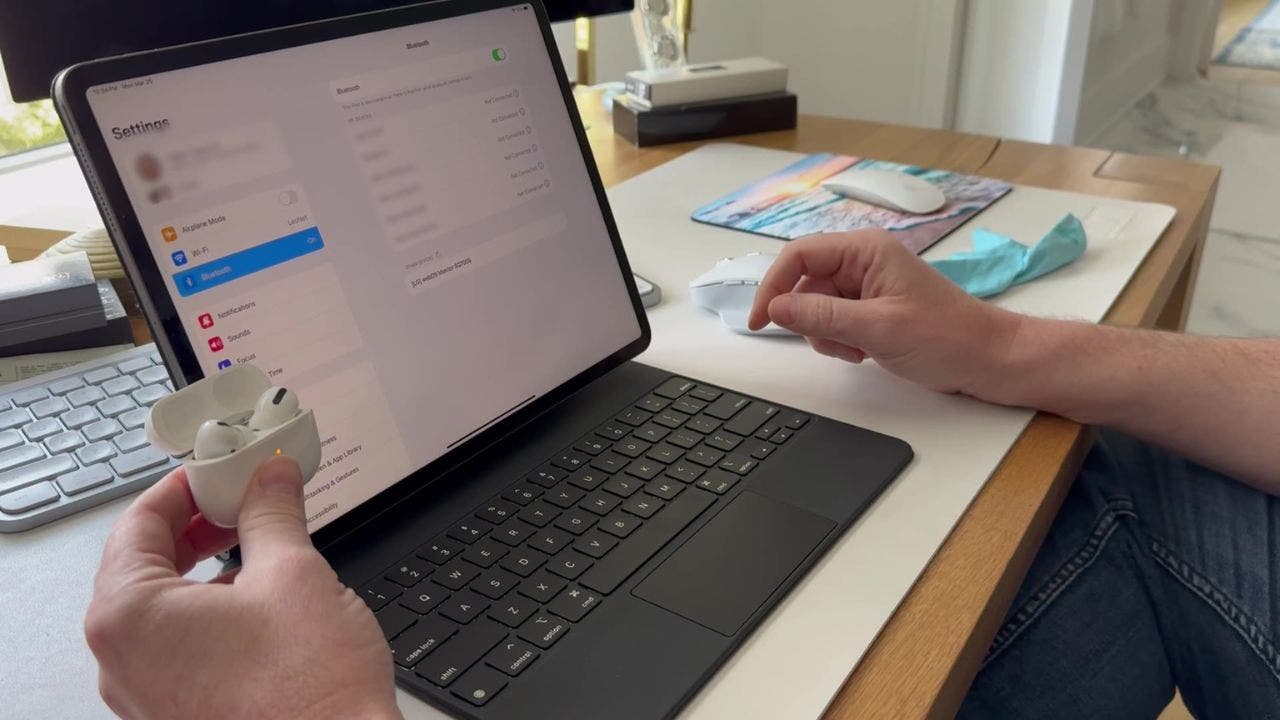
While the sonic quality of the AirPods certainly works across most devices with a Bluetooth connection, the real magic and a plethora of useful features really shine when you connect AirPods with other Apple devices. If you use the same Apple ID across all your Apple devices, you can really take advantage of the seamless auto-connect features.
GET SECURITY ALERTS, EXPERT TIPS – SIGN UP FOR KURT’S NEWSLETTER – THE CYBERGUY REPORT HERE
A woman listening to her AirPods (Kurt “CyberGuy” Knutsson)
ASK ANY TECH QUESTION AND GET KURT’S FREE CYBERGUY REPORT NEWSLETTER HERE
How to connect your AirPods to your iPhone
Before you start, make sure you’ve installed the latest version of iOS on your iPhone and be sure your AirPods are charged and in their case. If you’ve already connected your AirPods to your iPhone, it should connect automatically if you are signed in with the same Apple ID you used to sign onto your Mac. If not, here’s how to connect them to your iPhone.
- Unlock your iPhone and go to Settings
- Scroll down and tap Bluetooth, then turn on Bluetooth (if it isn’t already on)
- The toggle next to Bluetooth should be green, not grayed out.

Steps to connect your AirPods to your iPhone (Kurt “CyberGuy” Knutsson)
- Now, grab your AirPods case with the AirPods inside, then hold it next to your iPhone with the case top open.
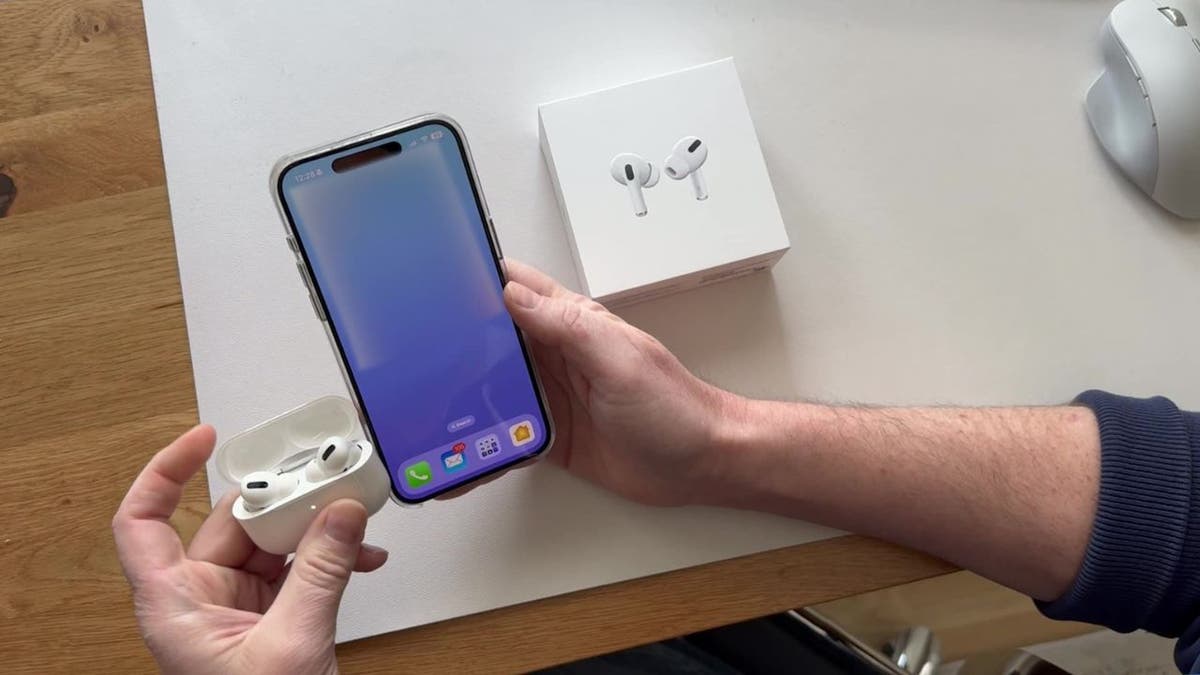
Steps to connect your AirPods to your iPhone (Kurt “CyberGuy” Knutsson)
- At this point, a setup animation will show up on your iPhone screen.
- Tap Connect and you should be ready to listen.
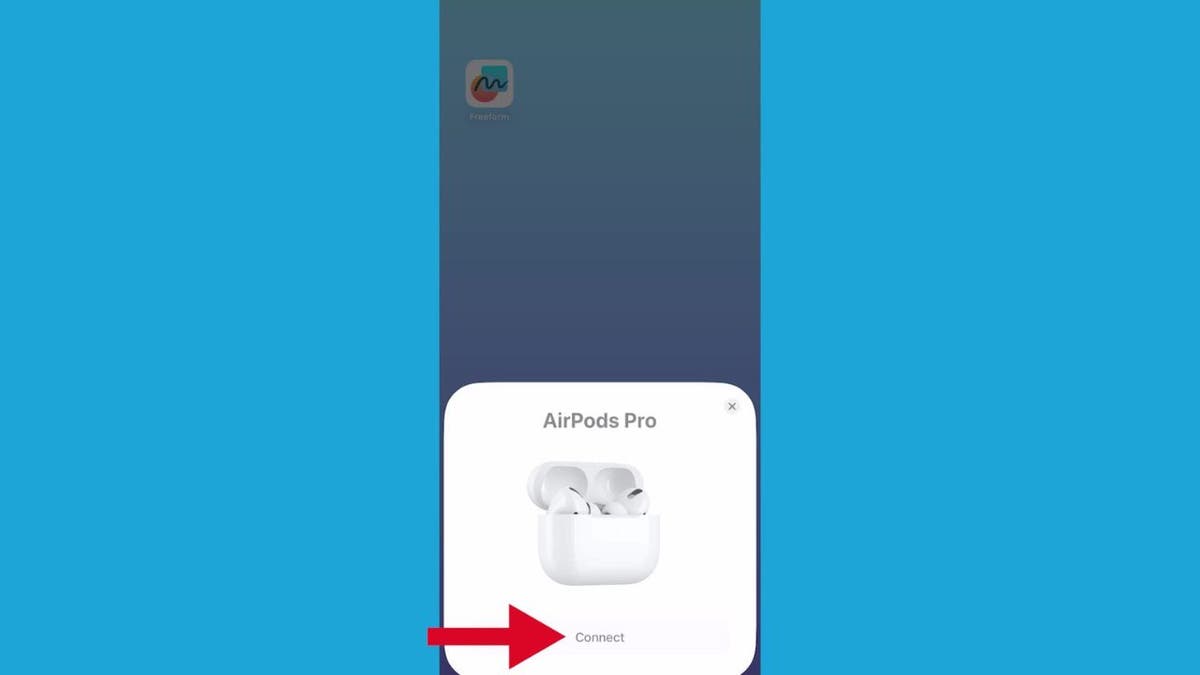
Steps to connect your AirPods to your iPhone (Kurt “CyberGuy” Knutsson)
MORE: 8 INCREDIBLY USEFUL THINGS YOU CAN DO WITH AIRPODS
How to connect your AirPods to your iPad
Before you start, make sure you’ve installed the latest version of iOS on your iPhone and be sure your AirPods are charged and in their case. If you’ve connected your AirPods to your iPad already, it should connect automatically if you are signed in with the same Apple ID you used to sign onto your Mac. If not, here’s how to connect them to your iPad.
- Open up your iPad and go to Settings.
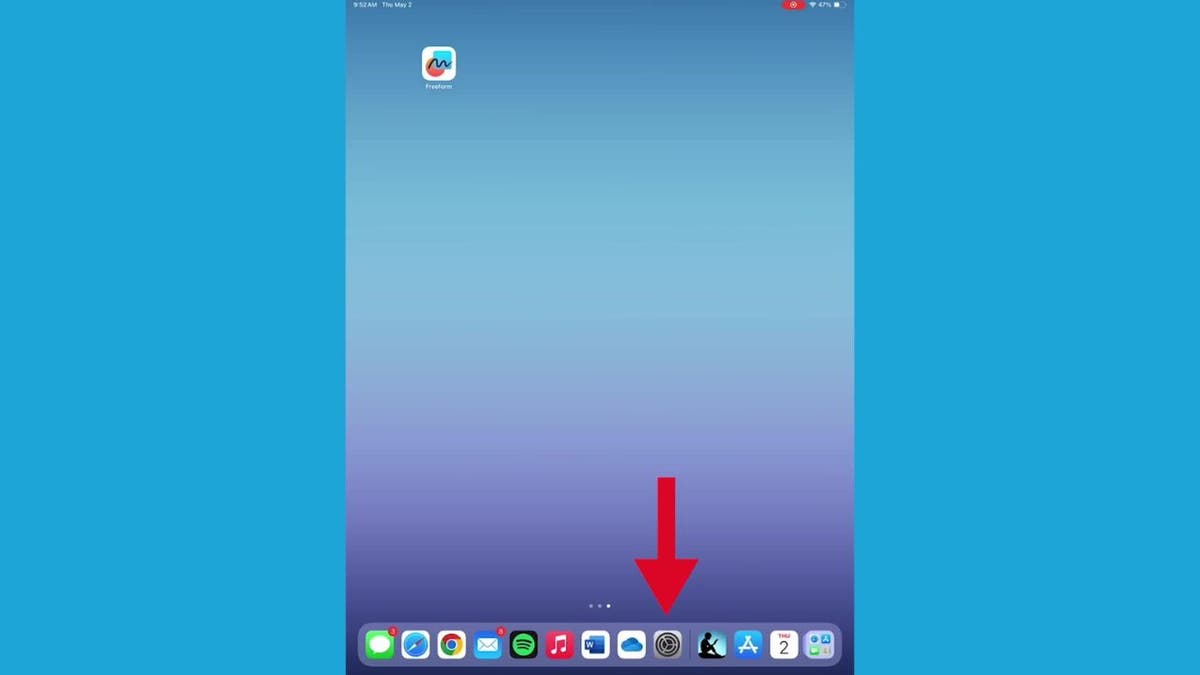
Steps to connect your AirPods to your iPad (Kurt “CyberGuy” Knutsson)
- From Settings, scroll down and tap Bluetooth.
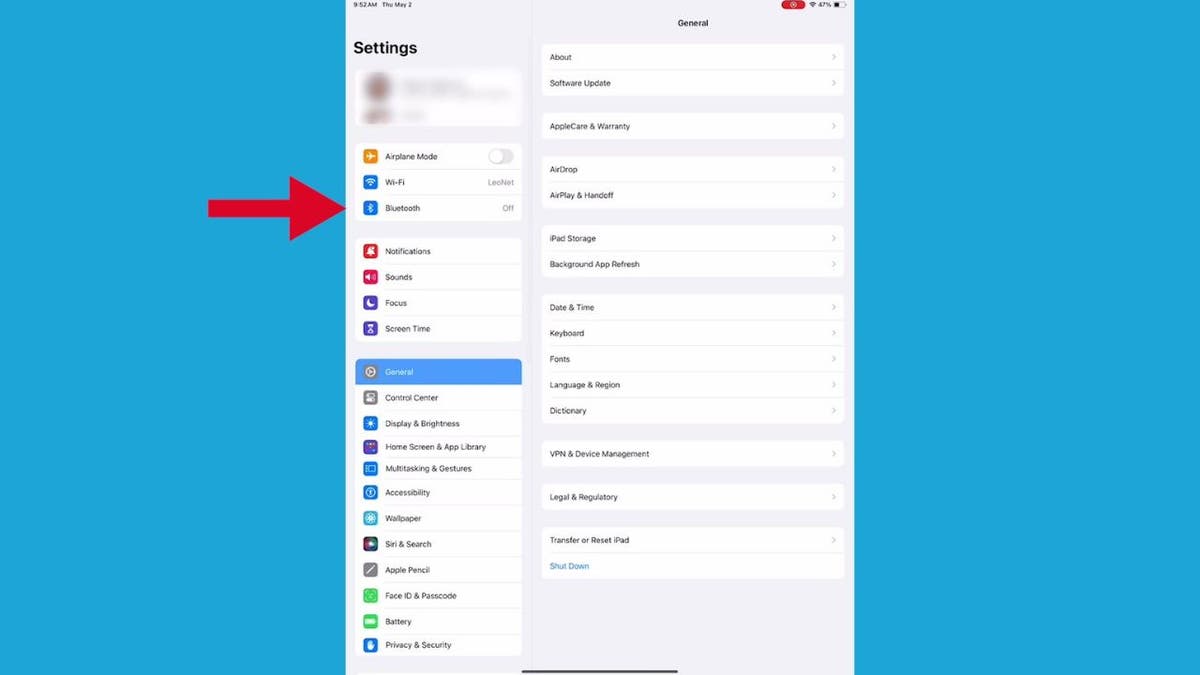
Steps to connect your AirPods to your iPad (Kurt “CyberGuy” Knutsson)
- Then, tap the button on the right once so that it turns green.
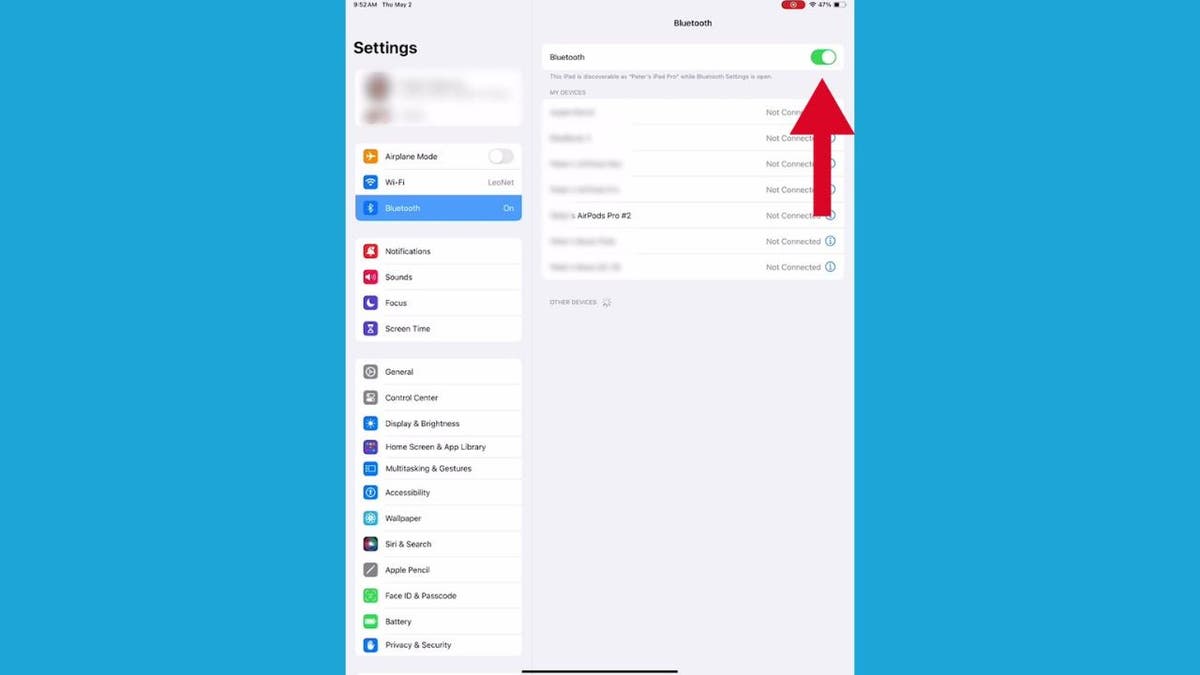
Steps to connect your AirPods to your iPad (Kurt “CyberGuy” Knutsson)
- Keep your iPad open to this screen and take out your AirPods.
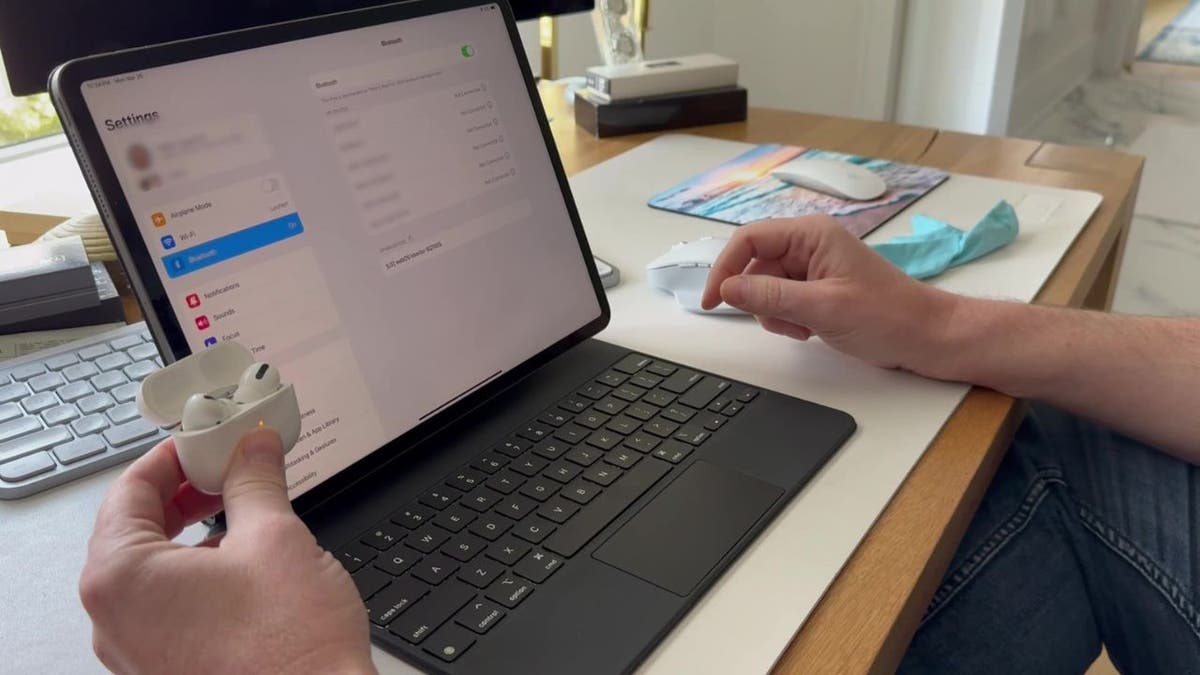
Steps to connect your AirPods to your iPad (Kurt “CyberGuy” Knutsson)
- From here, a setup animation will appear on the iPad. Tap Connect.

Steps to connect your AirPods to your iPad (Kurt “CyberGuy” Knutsson)

Steps to connect your AirPods to your iPad (Kurt “CyberGuy” Knutsson)
- Your AirPods should appear under the list of available devices in your Bluetooth settings on the iPad. Now tap your AirPods, and there you go.
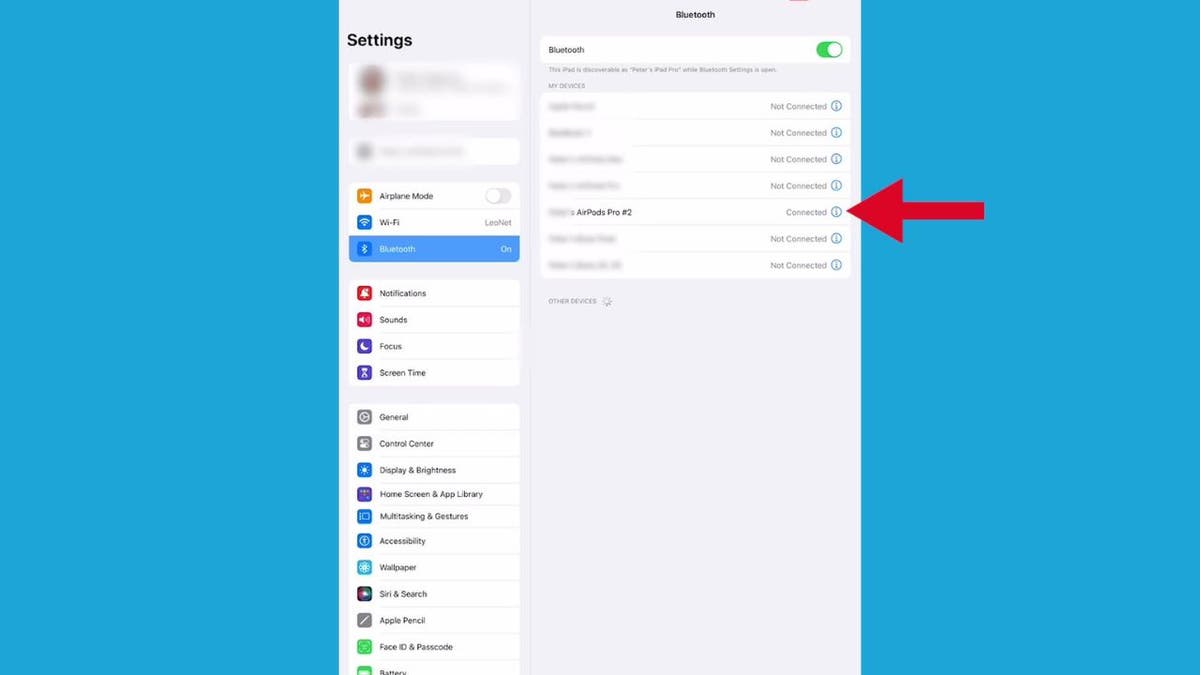
Steps to connect your AirPods to your iPad (Kurt “CyberGuy” Knutsson)
Kurt’s key takeaways
In a nutshell, AirPods are popular because they’ve got great performance, reliability and are easy to use, especially if you’ve already got other Apple products in your life. They just get you, you know? They move between your iPad to your iPhone without a hitch – it’s like they’ve got a mind of their own. And setting them up is super simple. It’s like tap, tap, boom – you’re connected.
In what ways do you think the AirPods’ features could be further enhanced when paired with Apple devices? Let us know by writing us at Cyberguy.com/Contact.
For more of my tech tips and security alerts, subscribe to my free CyberGuy Report Newsletter by heading to Cyberguy.com/Newsletter.
Ask Kurt a question or let us know what stories you’d like us to cover.
Follow Kurt on Facebook, YouTube and Instagram.
Answers to the most asked CyberGuy questions:
Copyright 2024 CyberGuy.com. All rights reserved.
Technology
Two students find security bug that could let millions do laundry for free
/cdn.vox-cdn.com/uploads/chorus_asset/file/23249791/VRG_ILLO_STK001_carlo_cadenas_cybersecurity_virus.jpg)
A security lapse could let millions of college students do free laundry, thanks to one company. That’s because of a vulnerability that two University of California, Santa Cruz students found in internet-connected washing machines in commercial use in several countries, according to TechCrunch.
The two students, Alexander Sherbrooke and Iakov Taranenko, apparently exploited an API for the machines’ app to do things like remotely command them to work without payment and update a laundry account to show it had millions of dollars in it. The company that owns the machines, CSC ServiceWorks, claims to have more than a million laundry and vending machines in service at colleges, multi-housing communities, laundromats, and more in the US, Canada, and Europe.
CSC never responded when Sherbrooke and Taranenko reported the vulnerability via emails and a phone call in January, TechCrunch writes. Despite that, the students told the outlet that the company “quietly wiped out” their false millions after they contacted it.
The lack of response led them to tell others about their findings. That includes that the company has a published list of commands, which the two told TechCrunch enables connecting to all of CSC’s network-connected laundry machines. CSC ServiceWorks didn’t immediately respond to The Verge’s request for comment.
CSC’s vulnerability is a good reminder that the security situation with the internet of things still isn’t sorted out. For the exploit the students found, maybe CSC shoulders the risk, but in other cases, lax cybersecurity practices have made it possible for hackers or company contractors to view strangers’ security camera footage or gain access to smart plugs.
Often, security researchers find these security holes and report them before they can be exploited in the wild. But that’s not helpful if the company responsible for them doesn’t respond.
Technology
The Mac Pro and Studio won’t get the M4 nod until mid-2025
/cdn.vox-cdn.com/uploads/chorus_asset/file/24748328/236706_Mac_Pro_AKrales_0094.jpg)
Throughout 2024, though, all of Apple’s laptops (except the MacBook Air) will move to the M4 chip that the company just gave the iPad Pro, Gurman writes. Amusingly, this herky-jerky chip upgrade cycle means that the iPad Pro is currently the single-core performance champ of Apple’s lineup — and it will continue to be for about another year, when compared to the Mac Studio and Mac Pro.
This is a silly comparison, of course — The current crop of Mac Studios and Mac Pros are incredible computers that hold more RAM, have more ports, and won’t throttle as quickly as the iPad Pro, even with that heat-conducting Apple logo. They also don’t have an operating system that stands squarely in the way of pushing their hardware. And high-end Mac users should be used to waiting a while between revisions. Still, I’m sure more than a few people will appreciate the upgrade when it comes.
-

 News1 week ago
News1 week agoSkeletal remains found almost 40 years ago identified as woman who disappeared in 1968
-

 World1 week ago
World1 week agoIndia Lok Sabha election 2024 Phase 4: Who votes and what’s at stake?
-

 Politics1 week ago
Politics1 week agoTales from the trail: The blue states Trump eyes to turn red in November
-

 World1 week ago
World1 week agoBorrell: Spain, Ireland and others could recognise Palestine on 21 May
-

 Movie Reviews1 week ago
Movie Reviews1 week ago“Kingdom of the Planet of the Apes”: Disney's New Kingdom is Far From Magical (Movie Review)
-

 World1 week ago
World1 week agoUkraine’s military chief admits ‘difficult situation’ in Kharkiv region
-

 World1 week ago
World1 week agoCatalans vote in crucial regional election for the separatist movement
-

 Politics1 week ago
Politics1 week agoNorth Dakota gov, former presidential candidate Doug Burgum front and center at Trump New Jersey rally
